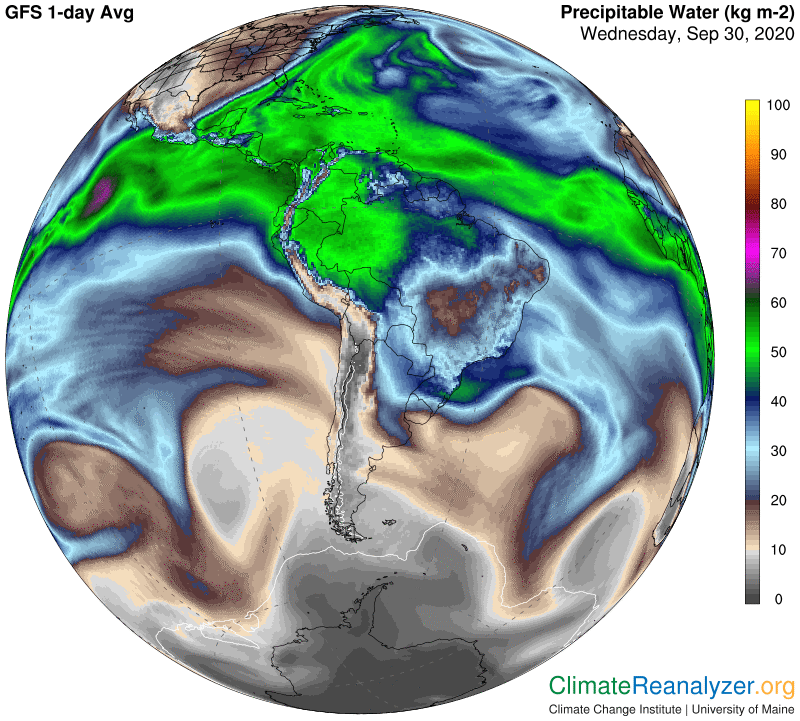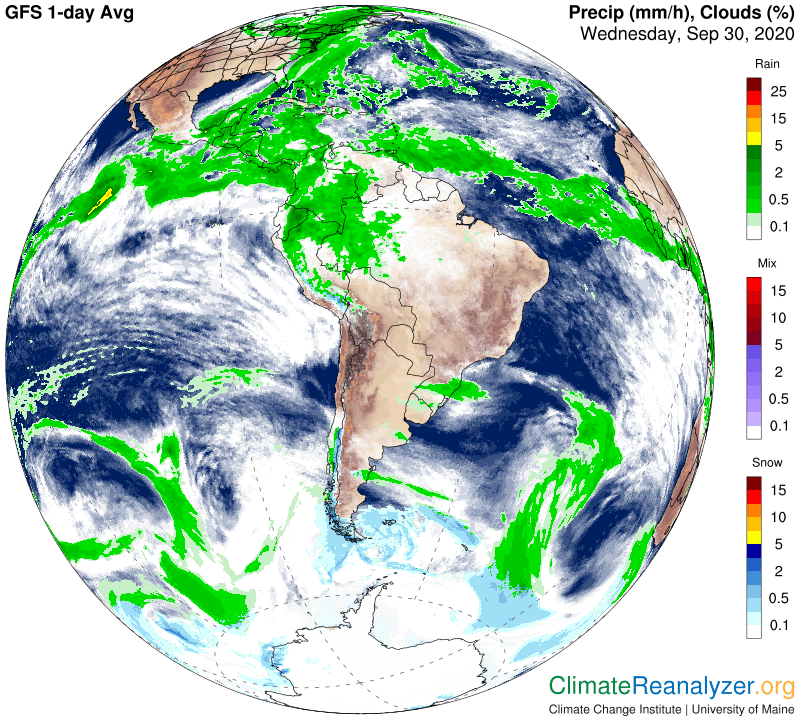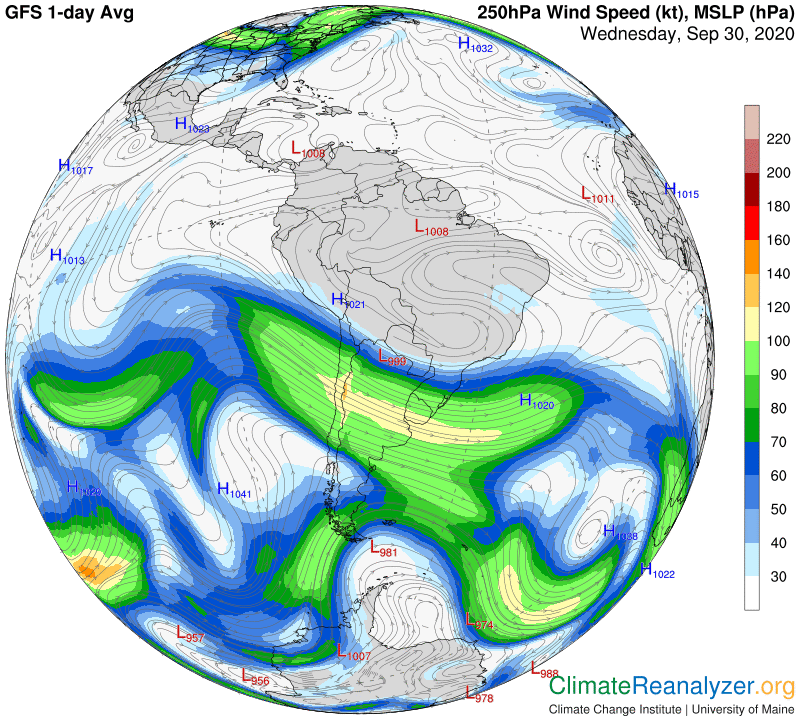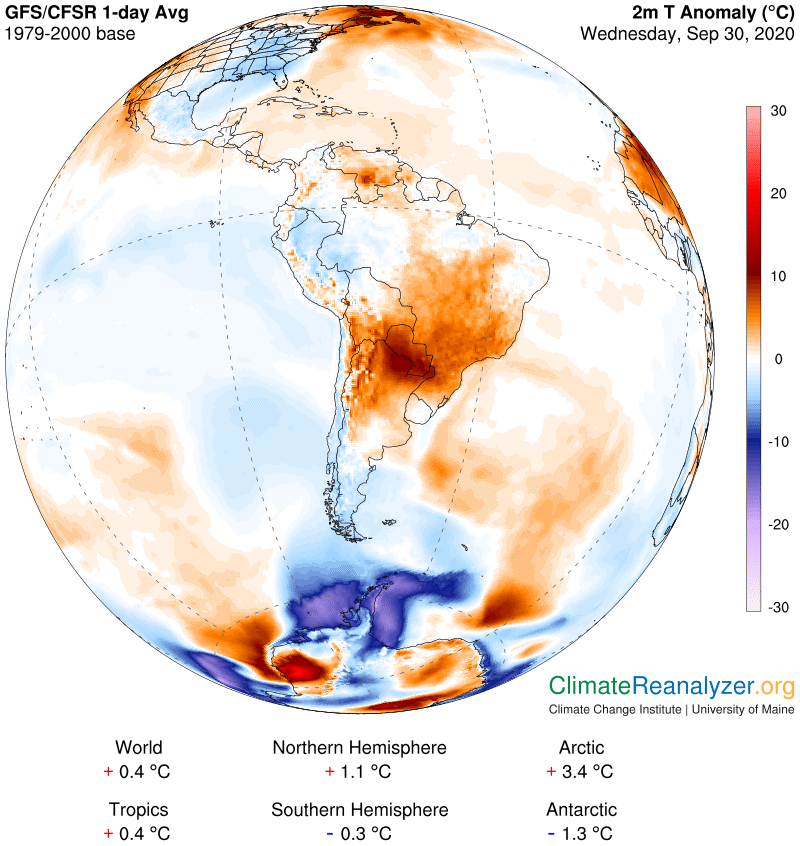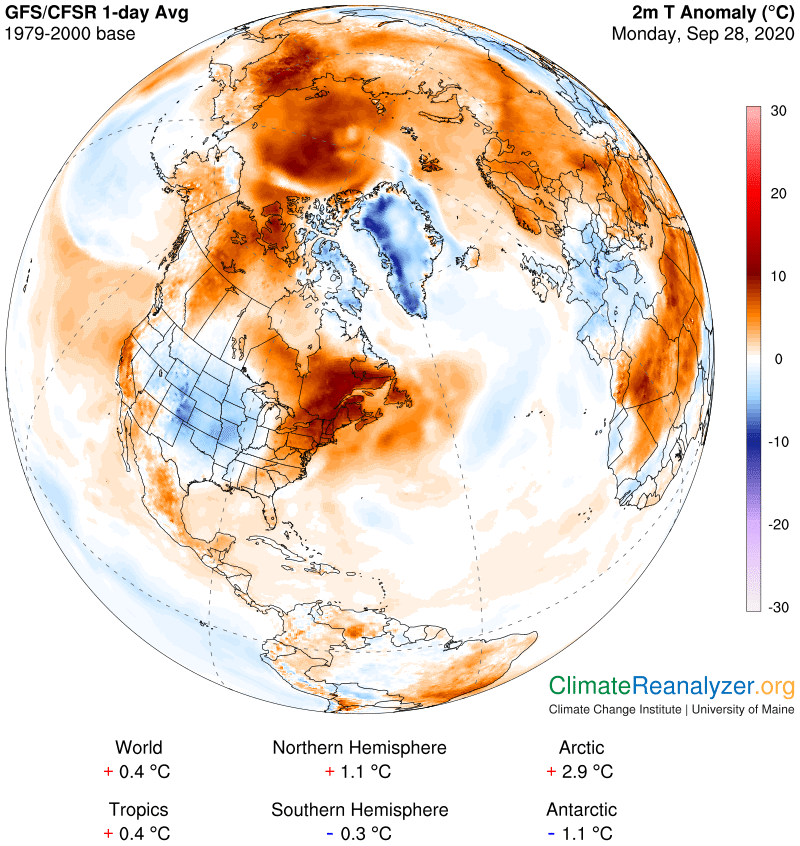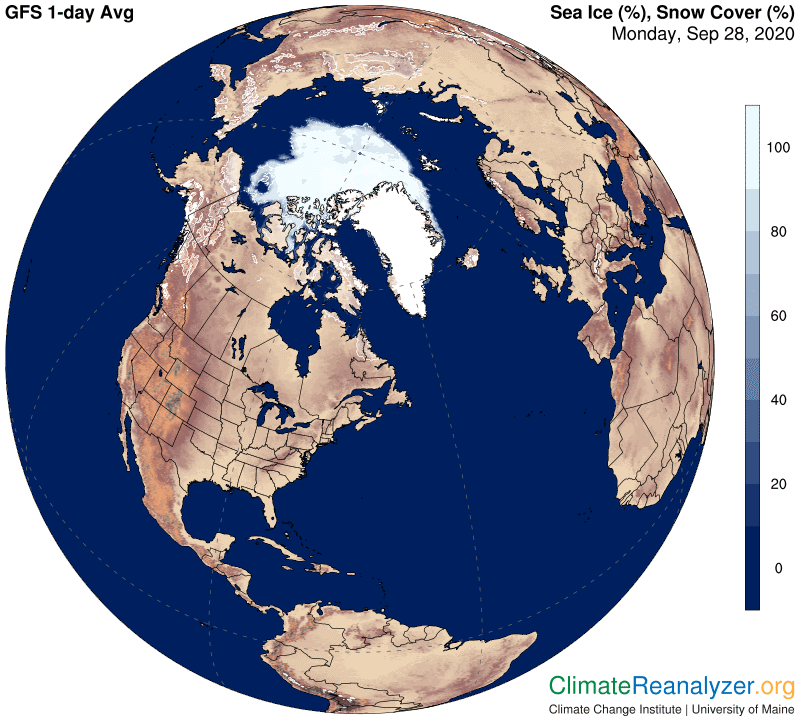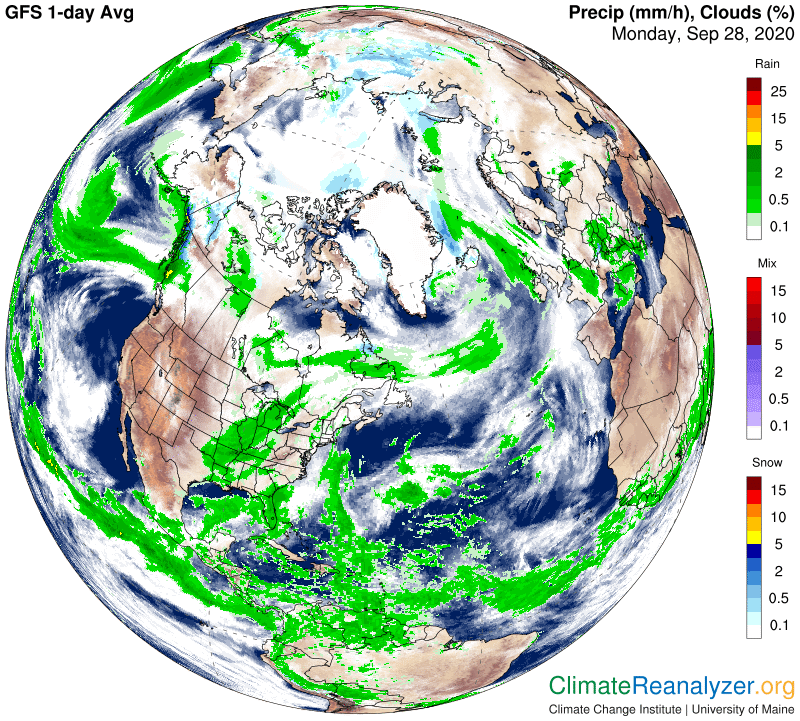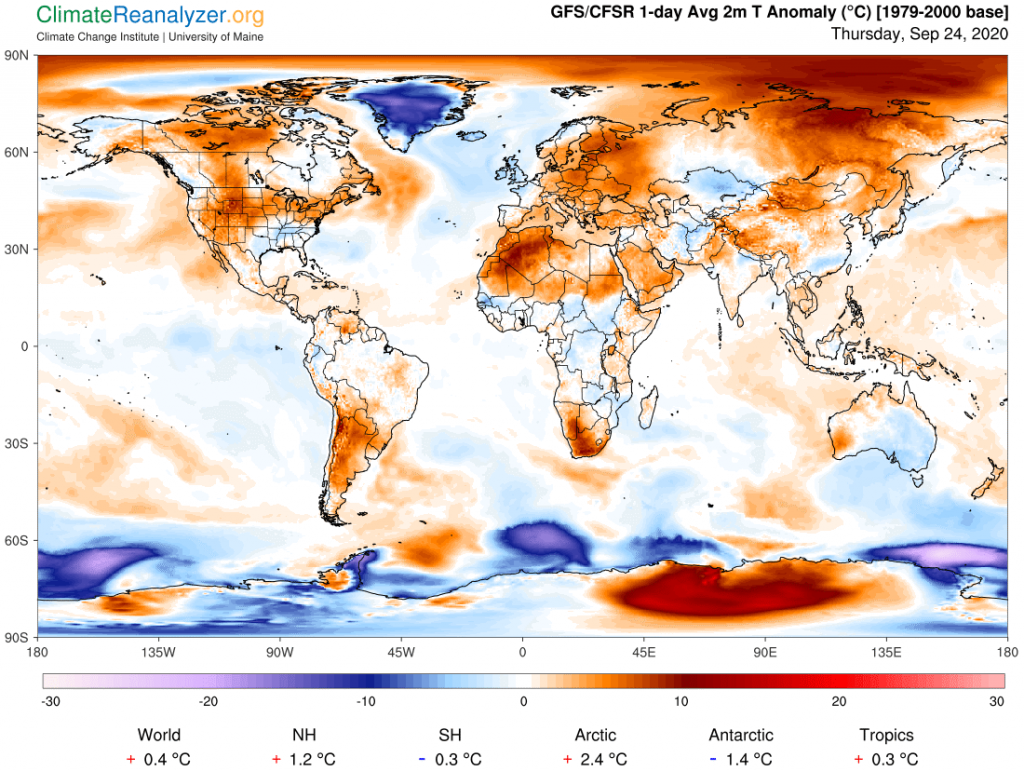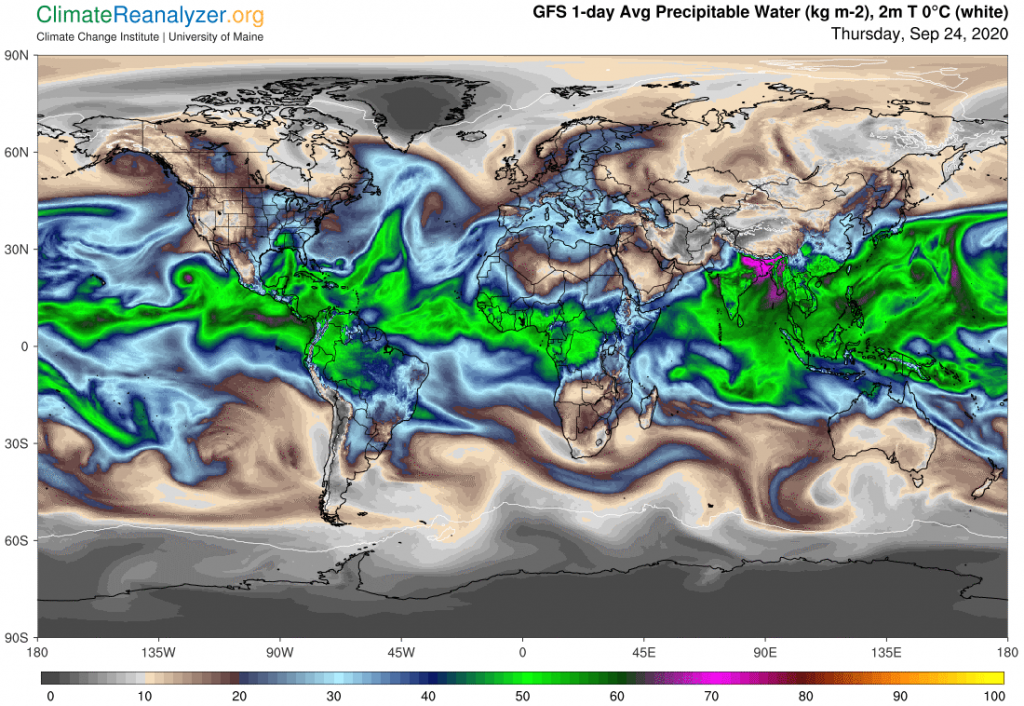Something new today. I have been looking for a better way to explain air temperature anomalies occurring over ocean surface waters and have found a promising approach. Overhead water vapor that works so well over land may have to take a back seat for this one. It’s a well-known fact that oceanic air temperatures almost exactly match the water temperatures directly below because of their constant heat exchange activity. Water always dominates the exchange due to its far greater capacity for both storing and emitting energy. We therefor need to look for anything that is especially suited for making changes in water surface temperatures, which are then transferred to air, that we orfinally don’t see on land. Strong and steady winds appear to have that ability, most notably those that interact with warm tropical waters.
Among the Weather Maps that I use all the time there is one that seldom gets attention, displaying wind speed at the Earth’s surface. A quick glance at this next image will tell you that winds blow much harder over water than over land, that patches of speed come in many shapes and sizes, and that every ocean or sea is commonly a home to high-speed patches. The map is not capable of revealing how steady the winds are, but regular observation and a good memory can help to fill in that gap.

There is another access to wind information that has more utility because of its real-time approach, greater detail and provision of numerous overlays showing almost anything you can think of, including air temperature. It’s the Windy website, which is almost miraculous except that it too lacks information related to steadiness, and it’s images cannot be copied. Here is the website: https://www.windy.com. (Learning the mechanics may take a little time, but is well worth the effort.)
When strong and steady winds blow over an ocean surface they have physical effects of two different kinds on surface temperatures. In front of the wind, surface water and its contained heat are pushed forward, either overlying or mixing with the waters yet farther ahead, which causes them to deepen but may or may not change their temperature. In the wake of the wind waters will become more shallow, activating a response via the upwelling of waters from below which will typically make that surface at least a little bit cooler than it was before. This process is basically what happens in the course of all El Nino and La Nina events in the Pacific, the biggest of which can continue for a number of months and have dramatic results on temperatures as well as other weather impacts. The same kind of thing can develop almost anywhere on a smaller scale, which is what I now want to investigate more closely as an alternative and possibly common source of ocean air anomalies.
One way to proceed begins with taking an ordinary view of air temperature anomalies, as seen on the chart below, and selecting any patch of warm or cool anomaly over an ocean, preferably in a warm or temperate area, that seems to stand out. Having the exact location in mind, one can switch over to the Windy site and look for associated strong wind action, adding a temperature overlay. This works quite well. Currently, the strength and positioning of La Nina’s trade winds are a perfect fit with all types of temperature displays. They surely constitute an important cause of the large temperature differences between the two hemispheres.

Carl








